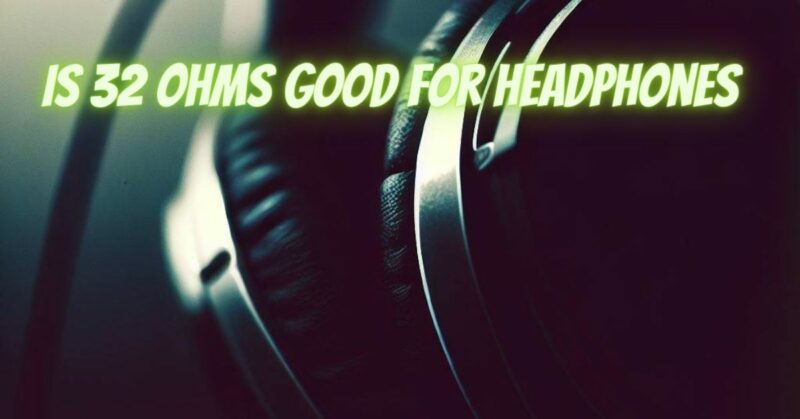When searching for the perfect pair of headphones, you might come across specifications like impedance that can influence your listening experience. Impedance, often measured in ohms, is an essential factor to consider when evaluating headphone performance. One common impedance rating is 32 ohms, but is this value “good” for headphones? To answer this question, let’s delve into what impedance is, its significance, and how a 32-ohm impedance headphone might suit your needs.
Understanding Impedance
Impedance refers to the opposition that an electrical circuit presents to the flow of alternating current (AC). In the context of headphones, impedance reflects the resistance the headphones offer to the electrical signal provided by your audio device, such as a smartphone, amplifier, or DAC (digital-to-analog converter). Impedance is measured in ohms (Ω), and headphones can have varying impedance levels, ranging from very low to very high.
Impedance and Sound Quality
The relationship between impedance and sound quality is not straightforward; it’s more about the interaction between impedance and the device that powers the headphones. Different devices have varying capabilities to drive headphones with different impedance levels. Let’s explore how impedance affects sound quality:
- Low Impedance (16-32 Ohms): Headphones with low impedance are easier to drive and require less power to achieve higher volumes. They are ideal for use with portable devices like smartphones and laptops, which often have limited power output. Low impedance headphones are generally considered to be more efficient in converting electrical signals to sound, resulting in louder volume levels and good sound quality without needing additional amplification.
- Medium Impedance (32-100 Ohms): Headphones with medium impedance, around 32 ohms to 100 ohms, strike a balance between efficiency and sound quality. They often offer improved sound quality compared to lower impedance headphones, making them suitable for a broader range of audio sources, including portable devices and some home audio setups. Medium impedance headphones may benefit from a dedicated headphone amplifier but can still perform well without one.
- High Impedance (100+ Ohms): High impedance headphones require more power to deliver optimal sound quality and volume. They are commonly used in professional audio settings, where dedicated headphone amplifiers or audio interfaces are available. While they might not be as suitable for casual listening on portable devices, high impedance headphones can provide exceptional sound clarity and detail when paired with high-quality amplification.
Is 32 Ohms Good for Headphones?
A headphone with a 32-ohm impedance rating can be considered versatile and suitable for a variety of listening scenarios. Here’s why:
- Compatibility: Headphones with 32-ohm impedance are generally compatible with a wide range of devices, including smartphones, laptops, and portable music players. They can be easily driven by most consumer electronics without the need for an external amplifier.
- Convenience: The lower impedance means you can enjoy decent volume levels without pushing your device to its limits. This convenience makes them great for on-the-go listening and situations where portability is essential.
- Sound Quality: While the sound quality might not be as pristine as high-end, high impedance headphones, 32-ohm headphones can still deliver impressive audio performance, especially when paired with quality source devices.
In the realm of headphone impedance, 32 ohms strikes a balance between efficiency, sound quality, and compatibility. Whether you’re an audiophile looking for a portable solution or a casual listener seeking convenience and good sound, headphones with a 32-ohm impedance can be an excellent choice. Remember that while impedance is a crucial factor, it’s not the sole determinant of headphone performance. Other aspects like driver quality, frequency response, and design also play pivotal roles in delivering an exceptional auditory experience.

